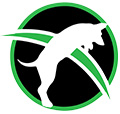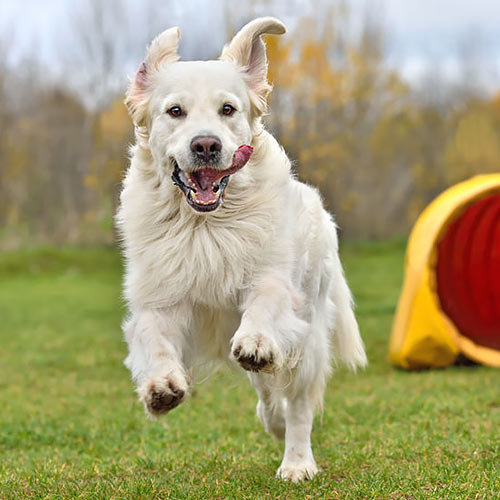Before you continue with this article it is recommended you read our article entitled, “Protection Puppy Training”.
We are taking for granted that you have a puppy who is genetically capable of doing the work you desire and that the pup is being properly socialized to many different kinds of stimuli and situations (see our article on Socialization for Puppies). Never make the attempt to train a shy dog. You’ll be creating a monster. The same can be said for aggressive dogs as well.
Another very important component of protection work is called the prey drive. It is the dog’s natural instinct to pursue and catch its prey. Your job is to develop and corral that drive – through several months of playing, training and eventual targeting – towards the “bad guy.” It includes biting and pulling on a rope, tug, throwing tennis balls, dragging a puppy sleeve around, eventually getting the older pup to bite the sleeve on the arm of the decoy. Most of the first 8-10 months of a pup’s life is spent in developing and corralling this drive. The goal is to teach the older pup or young adult to pursue and catch the decoy.
Another drive necessary for protection work is called the defense drive. This is the dog’s ability to stand its ground. Another way of putting it is Fight or Flight – will the dog keep at it when the going gets tough or will it turn tail and run? Genetic makeup has much to do with the defense drive. The dog either has it or it doesn’t. Yet a dog who has little can be trained into a more balanced defense. Most dogs imported from Europe are largely overbalanced in the prey drive. Yet the defense is there and must be brought out by a good trainer. This drive typically should not be fully developed until the pup is older, usually 8-12 months, depending upon the individual dog. It is important that you do not put too much pressure on a pup too young to handle it or you may “crack” him. He will be able to handle it soon enough. Take your time…it will be worth it.
Hunting ability is also important for a protection dog. It will be needed for home and building searches. Does the pup show patience in looking for an article? This may be something as simple as throwing a tennis ball in high weeds. Will he take his time to look for it? This may take some encouragement from you at first.
Another important facet of protection work is obedience. Notice we mention this last. It ranks the lowest on the totem pole for a protection prospect puppy, as we’ll explain shortly. Your dog must eventually learn to obey and obey now. Whether it is the out, the call-off, or a bark and hold, he must obey your command dependably. Now, a word to the wise is…don’t think your protection dog has to be fluently obedience trained at 4-6 months – like most pet dogs should be. Use a lot of positive reinforcement at an early age. Early compulsory training may be harmful to protection prospects. In other words, use compulsion in training very sparingly and mildly until the pup is almost a year old.
Too much compulsion at an early age tends to dampen his drives. This forces you to re-think some methods. Europeans (Germany, Czech Republic, Slavakia, and others) are masters at this. In fact, a green dog at 12 months old has very little obedience training, if any. Sometimes it may barely know its name. This appears strange to most American pet owners. Yet time and experience have proven that the Europeans know how to produce some very awesome working dogs. Our advice is to be as balanced in your approach as possible. Be as patient as you can. Re-think priorities. Re-think training methods. Always keep in mind that training protection puppies and dogs is entirely different than training a pet.
Somewhere along the line in your training you may want to consider some formal, professional protection training. Here at Conifer Canine, we have the knowledge, certification, experience and equipment to produce and/or train a personal protection dog for you.

